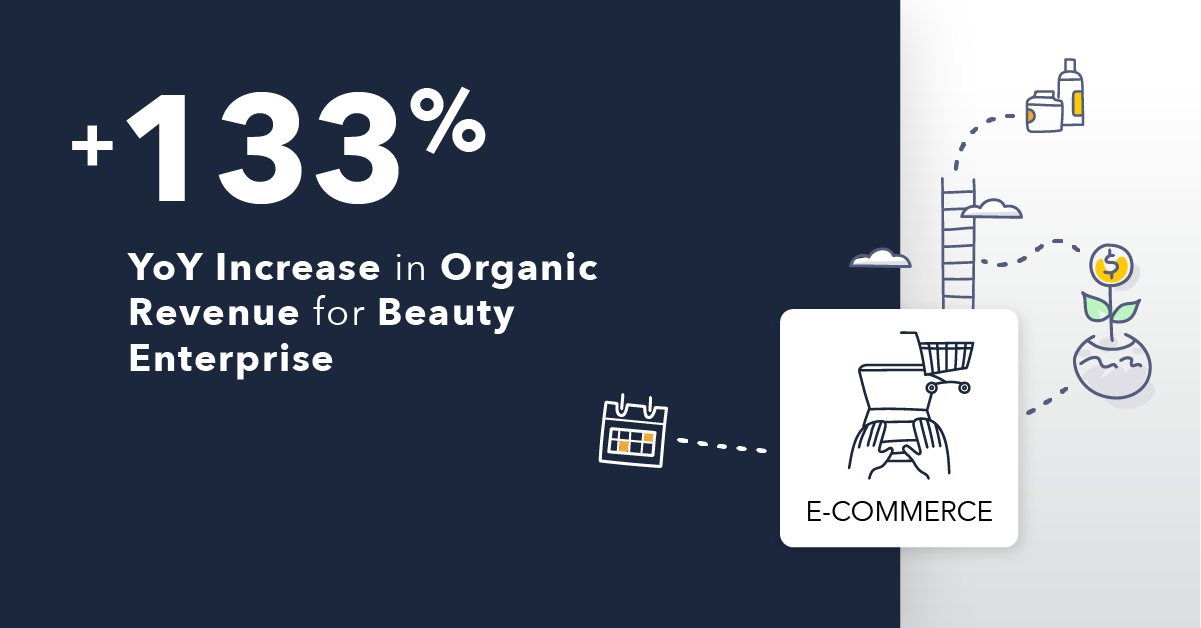What if search engines had more trouble crawling your website than your regular users have reading and engaging with it?
For many businesses, that's a real challenge. Search engine crawl bots, from both Google and Bing, especially tend to have trouble scanning large, JavaScript-heavy websites. That, in turn, leads to significant SEO (and conversion rate) issues.
Think about it this way: the less successful search engines are in 'reading' your website, the less likely your audience will be to surface your content through a web search. It's tough to get good conversion rates when your best, most UX-optimized pages never get crawled enough to appear in search results.
Fortunately, it doesn't have to be that way. Built right, SEO dynamic content can play a major role in solving the issue. In this guide, we'll cover:
- The basics of dynamic rendering
- Which website types can benefit from dynamic rendering
- How dynamic rendering helps users and conversion rates
- The differences between dynamic rendering and content cloaking
What is Dynamic Rendering?
According to Google's search documentation, dynamic rendering is the process of "switching between client-side rendered and pre-rendered content for specific user agents." It's specifically developed for websites that feature JavaScript, splitting the content on those websites in half:
- Your users will see the website as they normally would, JavaScript and all.
- Search crawlers see a 'flat' HTML version of your website, allowing them to more easily crawl and index it.
Bing has a similar definition, and a similar process.
The second part of that split is key. Crawlers from Google and Bing can technically index JavaScript on individual pages, but need more time to render it. As a result, they skip over it at first try, instead queuing it up for later rendering. That might mean, depending on how much time the crawler spends on your website, that the page will never end up indexed.
Dynamic rendering essentially eliminates that problem. The crawl bot receives an HTML 'headless' version of the page that's never actually displayed visually, pre-rendered to easily crawl. Meanwhile, the user sees the more dynamic JavaScript version, experiencing no loss in UX just to accommodate search engines.
Dynamic Rendering vs. Server-Side Rendering
You may be familiar with server-side rendering, which (as its name suggests) is the process of pre-rendering a website on the server before the user gets to it. Any code is rendered directly on your website's server, meaning it loads instantly for both users and crawlers. That makes for a great user experience due to fast loading times, and instant indexing opportunities.
The downside of server-side rendering is its complexity. You better have a great engineering team, and a fast server, to be able to execute it. Most organizations simply don't.
Dynamic rendering is not quite the same, though it's closely related. Here, the server-side rendering happens only for search engine crawlers, and it happens without ever having to visually render the JavaScript for a browser display. That significantly reduces the resource drain, making it a much more realistic option for many JavaScript-heavy websites.
Should You Implement Dynamic Rendering On Your Website?
Depending on your online presence, you might never even have to worry about dynamic rendering. You might have already noted our frequent references to JavaScript above, and both Google and Bing specifically reference JS as the impetus for implementing this tactic. More specifically, your website only needs it if you fall into one or more of the below categories.
- Your website is JavaScript-heavy, relying on it to support core features and UX mechanisms. If that's the case, Google and Bing bots will frequently get hung up on your JS-heavy pages, increasing the difficulty of the indexing process. Dynamic rendering is a natural workaround to avoid your JS features becoming an SEO and crawling liability.
- Your website regularly publishes a lot of content. In that case, you'll benefit from more frequent, comprehensive crawls that capture all of this new content on an ongoing basis. Dynamic rendering helps minimize the crawl time needed for each of your pages, increasing the total amount of content that can be indexed on a regular basis.
- Your website struggles with crawl budget issues. Crawlers never index all pages they come across, for simple lack of capacity. Your crawl budget, which is the number of requests a crawler will make for your website, could prevent some of your greatest content from being indexed. Dynamic rendering can optimize your crawl budget because it reduces the time needed for each page to be indexed.
These criteria may be relevant for any number of industries. E-commerce websites like Amazon, for example, feature both heavy amounts of JavaScript and rapidly changing content that requires continuous updates. The same is true for websites that function as publishers, which require frequent indexing on newly published content to maximize their visibility.
Recommended Reading: JavaScript and Google Indexation: Test Results Reveal What Works for Search
Small, relatively static websites will likely not be affected. But if your site falls into any of the above categories, especially if it uses JavaScript, dynamic rendering should be a priority implementation.
How Does Dynamic Rendering Help Users and Your Website?
So far, we've only discussed the SEO and crawl-related benefits of dynamic renderings. It's important to point out, though, that these benefits directly translate to a better user experience, leading to better conversion rates.
Those user benefits are both direct and indirect. Perhaps most directly, a more crawlable site creates a better in-page search experience.
Almost one third of users take advantage of an internal site search when offered, and that segment converts at significantly higher rates than their counterparts. So it's not just SEO; if your website search function is powered by Google or Bing, dynamic rendering can make it more effective.
Recommended Reading: Optimize AngularJS SEO for Crawling and Indexing Purposes
That search experience, of course, is just one way in which the process creates a better user experience. Put simply, it enables you to build your website with as much JavaScript and fresh content as you need, without nearly as much worry about crawl budget or other limitations.
Meanwhile, dynamic rendering also improves pre-visit UX. It increases the chances that pages served up from your website in SERPs are lower-level, more specific, and more relevant to their specific search intent. That, in turn, can help you create an SEO experience for the entire customer lifecycle, improving your ability to turn lower-funnel content into powerful conversion opportunities.
In short, it's not just about building a website that Google or Bing likes better. For websites where dynamic rendering is relevant, it's about building a presence that doesn't compromise user experience for search optimization, allowing you to equally prioritize both and exponentially increase your success as a result.
Does Dynamic Rendering = Content Cloaking?
Experienced SEO professionals may raise a red flag at this point. Doesn't Google specifically create rules against content cloaking, the tactic of serving up different versions of your website to users and crawl bots to "game the system?"
It's true that content cloaking can come with some significant search engine penalties. So here's the good news: dynamic rendering is not considered content cloaking. Here's how Google puts it:
Googlebot generally doesn't consider dynamic rendering as cloaking. As long as your dynamic rendering produces similar content, Googlebot won't view dynamic rendering as cloaking.
Bing, once again, has a similar exception for dynamic rendering. You need to make a good-faith effort to keep the content the same, regardless of visitors. As long as only the rendering process is different, but not the content served up to crawlers and human visitors, you're in the green.
To put it in simple terms, using Google's example:
- Showing a page with content about dogs to crawl bots but the same page with content about cats to human visitors violates cloaking rules and will get penalized.
- Showing the same content about dogs to both crawl bots and human visitors, with the only difference being flat HTML rendering for bots and dynamic JavaScript for humans, is not considered content cloaking.
Conclusion
Dynamic rendering is not for everyone. But when your website needs it, implementing the process can make a major difference. Especially for JavaScript-heavy websites that publish a lot of content, an instant flat HTML rendering specifically for crawl bots can solve crawl budget issues, while significantly improving user experience.
That implementation will take a few important steps, outlined by Google on its help documentation. But especially compared to a complete server-side rendering solution to the same process, it's a relatively simple fix to a problem that could otherwise upend your SEO and user experience efforts.
Of course, you might not be comfortable implementing the process on your own. You might have questions about anything from the implementation process to your crawl budget. In that case, we can help. Through our SEO Professional Services, we can evaluate your site to determine a potential need for dynamic rendering, moving all the way through ensuring its success as part of your SEO and UX efforts. Get in touch to get started today.








1 Comment
Click here to read/write comments